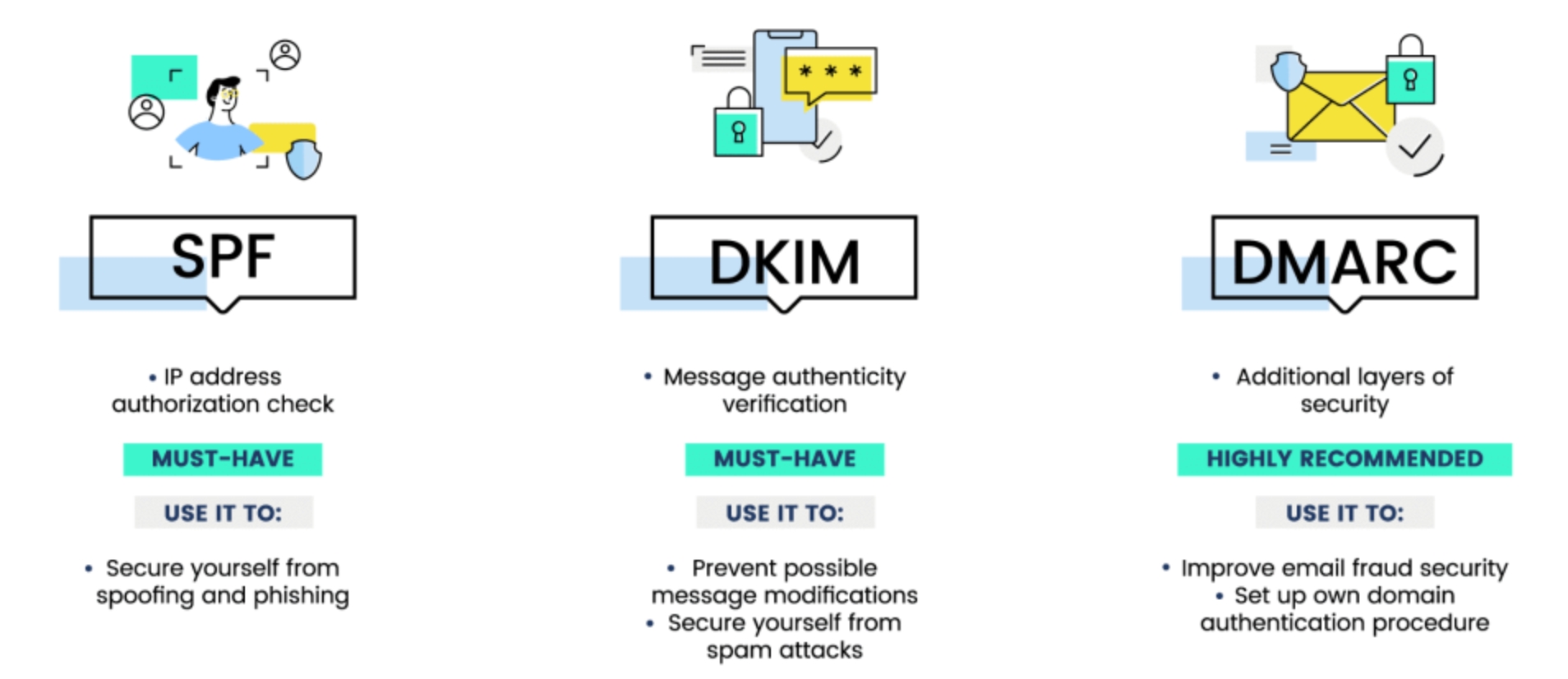Understanding SPF, DKIM, and DMARC
Master email authentication with our guide to SPF, DKIM, and DMARC. Secure your domain, improve deliverability, and protect against spoofing.

A Guide to Email Authentication
Email authentication is essential for ensuring secure and reliable email delivery. This guide covers SPF, DKIM, and DMARC protocols, helping you protect your domain from spoofing and phishing while improving email deliverability.
By implementing these authentication measures, you establish trust with email providers and reduce the risk of your emails being marked as spam. Whether you're a beginner or experienced in email marketing, this guide simplifies authentication for better email performance and security.
What Are SPF, DKIM, and DMARC?
Email authentication protocols ensure your emails are trusted and not marked as spam or fraudulent. Here’s a breakdown of these essential tools.
1. SPF (Sender Policy Framework)
SPF verifies that the sending mail server is authorized to send on behalf of your domain. It uses DNS records to list approved IP addresses. Misconfigured SPF can lead to email delivery issues. SPF Setup:
Add an SPF TXT record to your domain’s DNS.
Example:
v=spf1 ip4:192.0.2.0/24 include:example.com -all
2. DKIM (DomainKeys Identified Mail)
DKIM ensures email content integrity by adding a cryptographic signature to messages. This verifies that the email has not been tampered with during transit.
DKIM Setup:
Generate a DKIM key pair.
Publish the public key as a DNS TXT record.
Configure your email server to sign outgoing emails.
3. DMARC (Domain-based Message Authentication, Reporting, and Conformance)
DMARC builds on SPF and DKIM, letting domain owners specify how to handle failed authentication checks. It also provides reporting on fraudulent email activities.
DMARC Setup:
Add a DMARC TXT record to your DNS.
Example:
v=DMARC1; p=quarantine; rua=mailto:[email protected].
"When you create an SMTP using SenderAI, our Email App automatically handles the process, setting up email encryption and configuring SPF, DKIM, and DMARC. It also updates your domain’s DNS through Cloudflare, ensuring seamless integration."
Why Are These Important?
Prevents Email Spoofing: Protects your domain from being misused for phishing or fraud.
Improves Deliverability: Authenticated emails are more likely to land in inboxes, not spam folders.
Builds Trust: Demonstrates legitimacy to email providers and recipients.
How Do I Verify My SPF, DKIM, or DMARC Setup?
SPF, DKIM, and DMARC are essential authentication protocols for ensuring email delivery:
SPF (Sender Policy Framework): Verifies that emails are sent from authorized servers.
DKIM (DomainKeys Identified Mail): Ensures email integrity by adding a digital signature.
DMARC (Domain-based Message Authentication, Reporting, and Conformance): Aligns SPF and DKIM policies to protect against email spoofing.
How to Check:
You can verify your SPF, DKIM, and DMARC records by sending a test email to tools like mail-tester.com or a Gmail account.
Mail Tester provides a detailed report on your email authentication status, while Gmail highlights authentication results in the email headers.



Best Practices
Regularly monitor and update your DNS records.
Use a reporting tool to analyze DMARC reports for threats or misconfigurations.
Combine all three protocols for comprehensive email authentication.
Conclusion
Implementing SPF, DKIM, and DMARC is vital for securing your domain, enhancing email deliverability, and maintaining your reputation.
Last updated
Was this helpful?